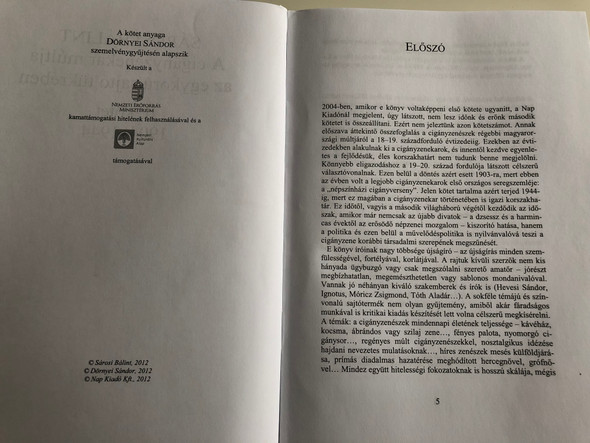Description
Bagpipers, Gypsy Musicians by Bálint Sárosi / Instrumental folk music tradition in Hungary / Institute for Musicology / Nap Publishing - Nap kiadó / Hardcover
Hardcover 2017
ISBN: 9789633320945 / 978-9633320945
ISBN-10: 9633320941
PAGES: 264
PUBLISHER: Nap kiadó
LANGUAGE: English / Angol
Hungarian Description:
„Kik voltak a hangszeres magyar népzene tudói és előadói? Mivel foglalatoskodtak, amikor nem zenéltek? Hogyan tekintett rájuk a társadalom? Milyen összeállítású együttesekbe tömörültek azok a paraszt vagy cigány vagy zsidó zenészek, akik a közösség igényét kielégítették? Mi volt a funkciója e zenének, mely, mint az alcím mondja, »kísérője munkának, gyásznak, szórakozásnak«? Hogyan viszonyult a zenész közönségéhez, és hogyan bánt amaz ővelük? Mikor, s hogyan jelentek meg, és kaptak egyre nagyobb szerepet a cigány muzsikusok? Hogyan tanulták meg játszanivalójukat? Mi volt, amist másoktól lestek el, s hogyan képezték magukat egyesek rendszeres tanulás által? E kérdésekre rövid pályarajzokkal, történelmi pillanatfelvételekkel, olykor anekdotákkal válaszol a szerző, és amikor összegezi a tanulságot, úgy érezzük, e példák az olvasót is ugyanezekhez a konklúziókhoz vezették. […] A könyv a tudós számára egy téma hiteles összegzése; a népzene iránt érdeklődőknek tudósítás a zenészek és a zene életéről; a művelt olvasónak jó alkalom egy kultúránk organikus részét alkotó hagyomány megismerésére.”
English Summary:
For the scholar the book is an authentic summary of a theme; for those interested in folk music, it is information about the life or musicians and music; for the cultured Reader it is a good source to get to know a tradition...
Who were the repositories and performers of Hungarian instrumental folk music? What were they doing when they did not play music? What was the opinion of society about them? What ensembles did the peasant or Gypsy or Jewish musicians form who satisfied the demand of the community? What was the function of this music which, as a chapter title says, is the 'attendant of work, grief and leisure'? What was the musician's attitude to his public, and how did the public treat him? When and how did Gypsy musicians appear and gain a growing role? How did they learn what they were supposed to play? What did they learn by watching others and how did some of them train themselves through regular learning? The author answers these questions with brief career sketches, historical snapshots, sometimes anecdotes and when he summarizes the material, we feel that the adduced examples have also led the Reader to the same conclusions.




















